In the realm of color creations, two captivating worlds stand apart: the intricate process of making lake pigments and the age-old practice of natural dyeing. While both methods embrace the wonders of natural materials, they diverge significantly in purpose, techniques, and end products. In this blog post, we delve into the intriguing differences between the lake pigment-making process and natural dyeing, shedding light on their unique characteristics and creative possibilities.
The Complexity of Lake Pigment Production
The process of lake pigment production from plant materials is characterized by complexity and adaptability. Lake pigments are distinct as they involve combining a dye extracted from plants with a mordant, resulting in a stable and insoluble pigment. However, this creation isn’t standardized; rather, it demands consideration of various factors, making adaptability crucial for successful pigment production.
- Diverse Plant Species: Nature’s bounty offers an array of plant species, each containing unique pigments that result in a wide spectrum of colors.
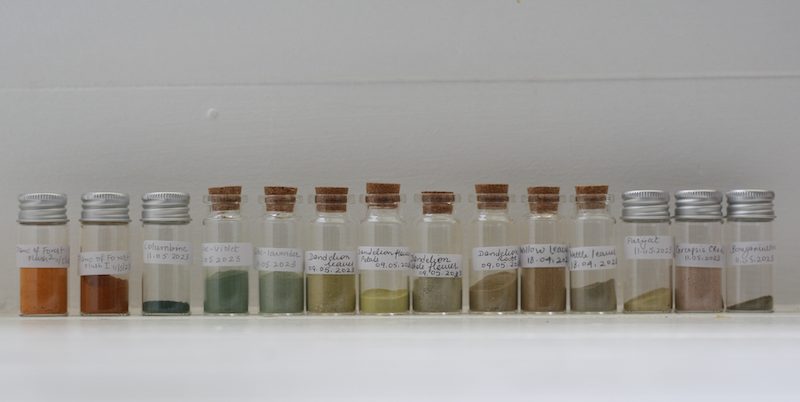
Lake pigments from various plant sources, 2023
- Specific Plant Parts: Different parts of the same plant can produce varying concentrations of dyes, influencing the final pigment’s color outcome.
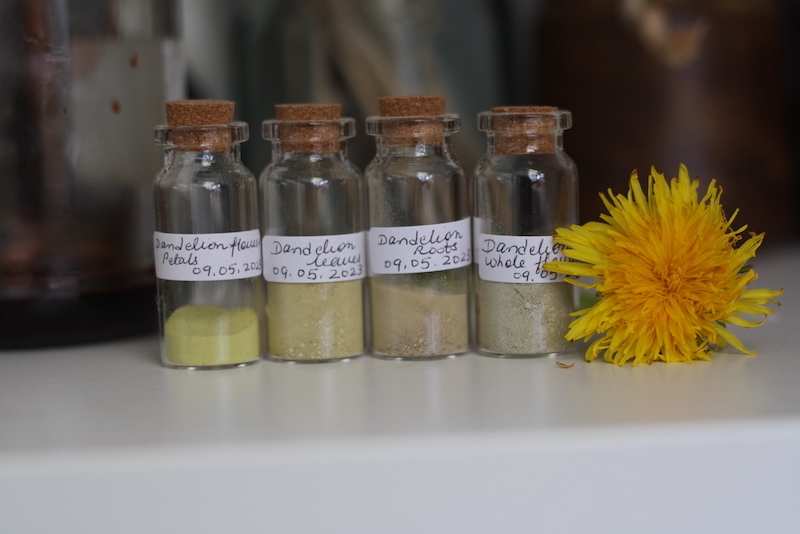
Lake Pigments extracted from various parts of Dandelion plant, 2023
- Desired Colors and Mordant Interactions: The final pigment’s color depends on the specific dyes in the plant material and how they interact with the chosen mordant, adding complexity to the process.
- Plant Growth Conditions: Environmental factors such as soil, climate, and season impact the chemical composition and pigmentation of plants, adding to the intricacy of pigment production.
- Experimentation and Adaptation: Due to the diverse variables involved, there’s no one-size-fits-all formula for making lake pigments. Experimentation and adaptability are essential for achieving desired results.
The lake pigment-making process differs significantly from the calculations used in natural dyeing. Here’s how they contrast:
Purpose and End Product:
Lake Pigment Making: The goal of making lake pigments is to create stable, insoluble pigments that can be used for various artistic and decorative applications. The pigments are intended to have longevity and permanence.
Natural Dyeing: In natural dyeing, the aim is to directly apply the extracted dye to the fabric or substrate. The focus is on achieving immediate color results on the material, but the colors may be less durable and may fade over time.
Use of Mordants:
Lake Pigment Making: Lake pigments require the use of mordants, which are metal salts that are used to help fix the dye to the substrate, creating a more permanent color. The mordanting process is crucial for the formation of stable pigments.
Natural Dyeing: Traditional natural dyeing process does not involve the use of mordants. The dye extracted from the plant material is applied directly to the fabric, relying on the affinity of the dye molecules for the fibers to achieve coloration. However many natural dyers use mordants as additives during the dyeing process. Mordants help fix the dye to the fabric, resulting in better color retention and increased durability. Other reasons why modern natural dyers use mordants:
- Enhancing Color Fastness: One of the primary reasons for using mordants is to improve color fastness. Mordants can help the dye molecules bind more strongly to the fabric, reducing color fading over time, especially when exposed to light and washing.
- Creating New Colors: Mordants can also alter the color obtained from certain natural dyes. Depending on the choice of mordant, the resulting color can be significantly different from the original dye color. This allows for greater versatility and a broader color palette for natural dyers.
- Mordant Types: Various mordants can be used in natural dyeing, such as alum, iron, copper, and tin salts, each offering distinct color effects and outcomes.
- Environmental Considerations: While mordants enhance the dyeing process, their use raises environmental concerns. Some mordants, like chrome, can be toxic and harmful to the environment.
- Diversity in Natural Dyeing: The use of mordants in natural dyeing is not a universal practice. Different cultures, regions, and individual dyers may have their preferred dyeing techniques, which can vary in the use of mordants.
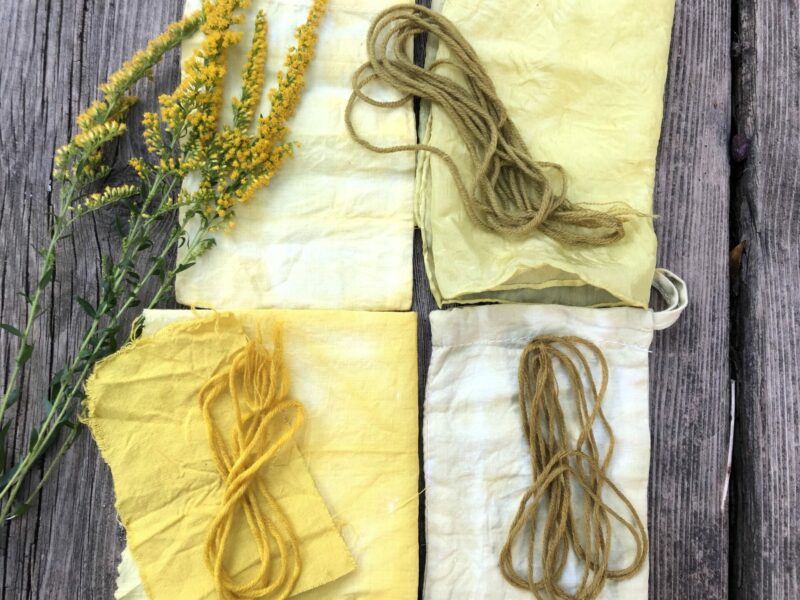
Naturally dyed fabric and yarn without the use of mordant.
Calculation of Ratios:
Lake Pigment Making: There is no standard formula or fixed ratio for making lake pigments from plant materials. The process is often experimental and involves adjusting the formulation based on the specific plant, desired color, and mordant used.
Natural Dyeing: In natural dyeing, calculating the dye-to-fiber ratio is important to achieve consistent and predictable color results. The dyer calculates the amount of mordant (optional choice) and dye needed relative to the weight of the fabric to ensure proper color uptake.
Color Fastness and Permanence:
Lake Pigment Making: Lake pigments are known for their exceptional color fastness and permanence due to the mordanting process. The pigments are relatively less prone to fading and washing out compared to traditional natural dyes.
Natural Dyeing: Natural dyes, while providing beautiful and unique colors, may not have the same level of color fastness and permanence as lake pigments. The colors may fade over time, especially when exposed to light, washing, and other environmental factors.
Application and Techniques:
Lake Pigment Making: Lake pigments can be used in artistic and decorative applications, such as painting, printing, and coloring various materials like textiles, paper, and wood.
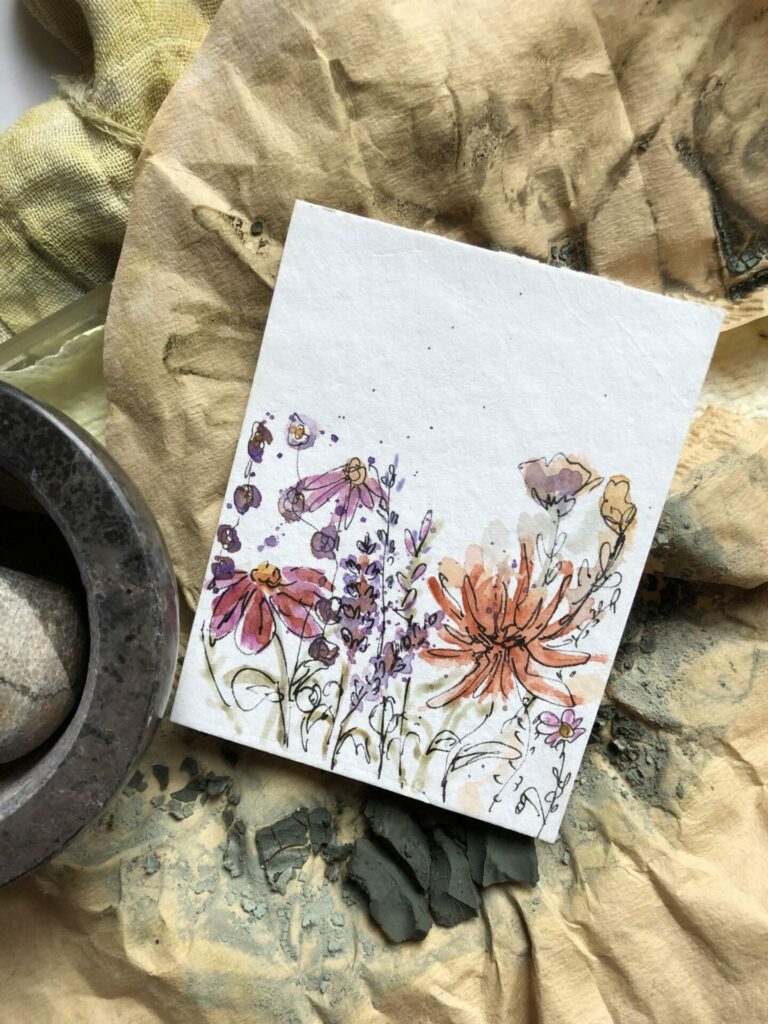
Floral illustration with Lake Pigments
Natural Dyeing: Natural dyeing is primarily used to color textiles and fibers, often in the context of traditional crafts, art, and clothing production.
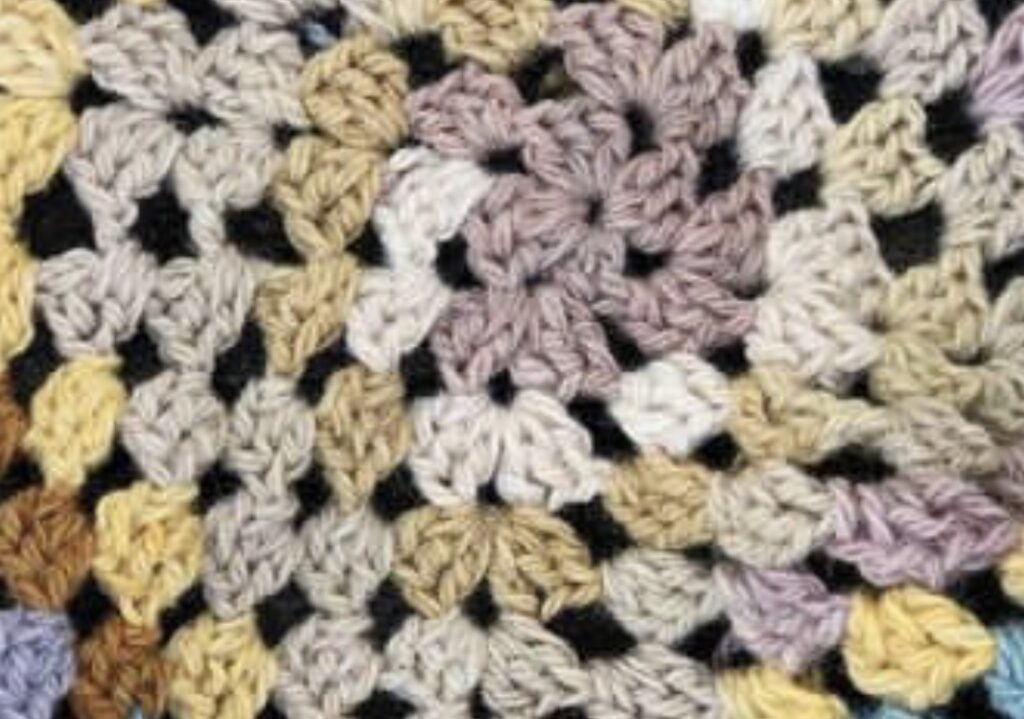
Naturally dyed wool yarn without mordant
In summary, the process of lake pigment production from plant materials is characterized by complexity and adaptability. Lake pigments are distinct as they involve combining a dye extracted from plants with a mordant, resulting in a stable and insoluble pigment. However, this creation isn’t standardized; rather, it requires consideration of various factors, making adaptability crucial for successful pigment production. In contrast, natural dyeing relies on the direct application of dyes to fibers, celebrating the beauty of natural colors and embracing their inherent variability and unpredictability. Both processes offer distinct and fascinating approaches to creating colors from plant materials, catering to different artistic preferences and applications.
Uncover nature’s hidden colors! Enroll in “Botanical Lake Pigments” and learn the art of creating captivating pigments from frugal resources.
Suggested reading:
1. Yusuf M, Shabbir M, Mohammad F. Natural Colorants: Historical, Processing and Sustainable Prospects. Nat Prod Bioprospect. 2017 Feb;7(1):123-145. doi: 10.1007/s13659-017-0119-9. Epub 2017 Jan 16. PMID: 28093670; PMCID: PMC5315675.
2. Pinheiro, L., Kohan, L., Duarte, L.O. et al. Biomordants and new alternatives to the sustainable natural fiber dyeings. SN Appl. Sci. 1, 1356 (2019). https://doi.org/10.1007/s42452-019-1384-5
3. Rehman, A., Irfan, M., Hameed, A., Saif, M. J., Qayyum, M. A., & Farooq, T. (2022). Chemical-Free Dyeing of Cotton With Functional Natural Dye: A Pollution-Free and Cleaner Production Approach. Frontiers in Environmental Science, 10, 848245. https://doi.org/10.3389/fenvs.2022.848245
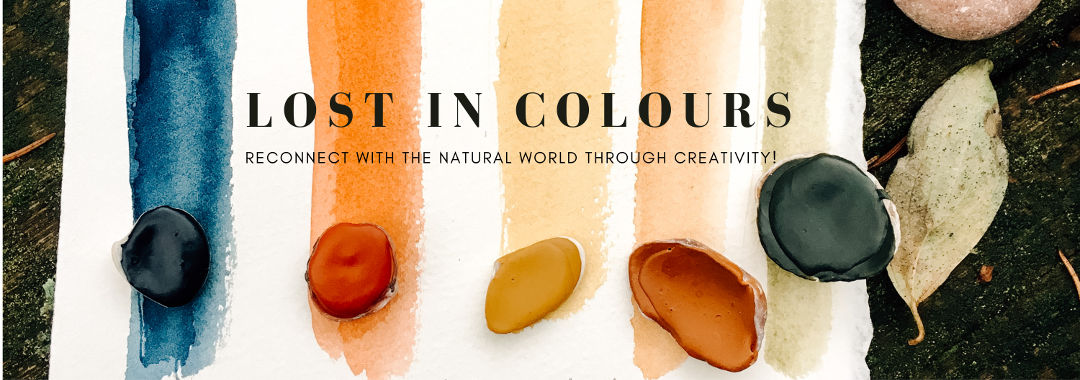
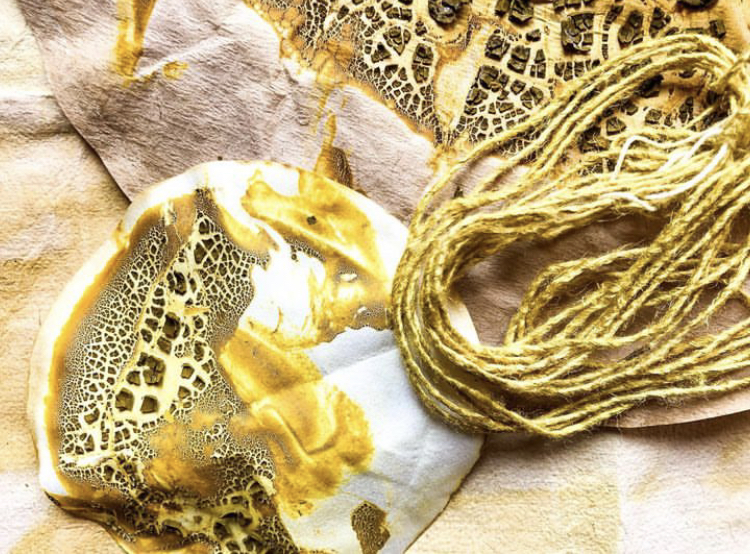
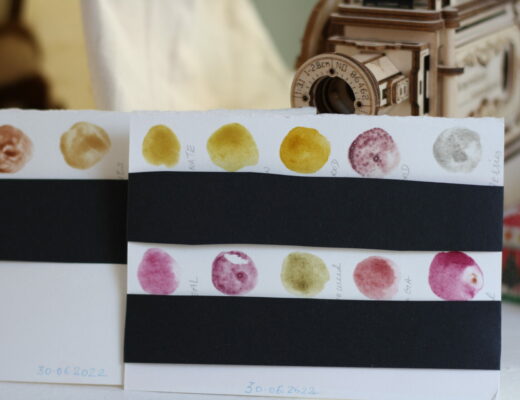
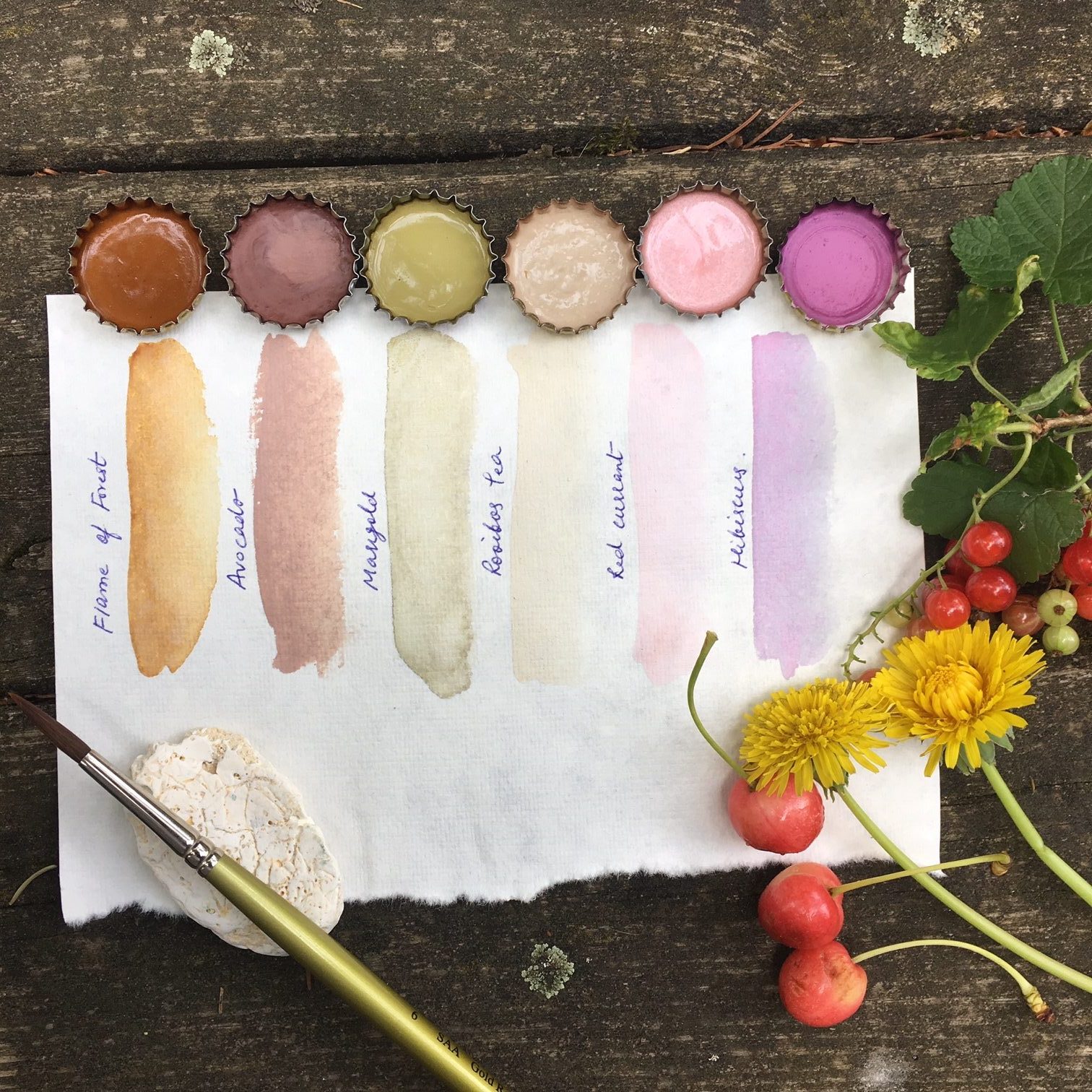
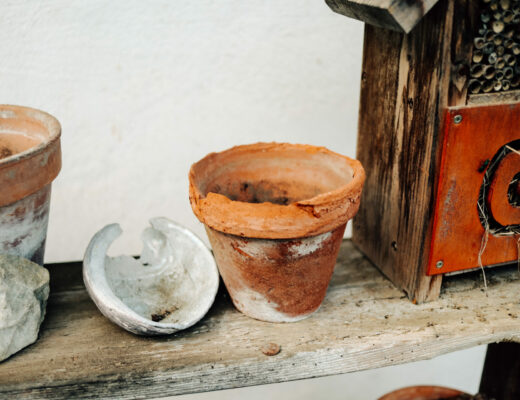
No Comments